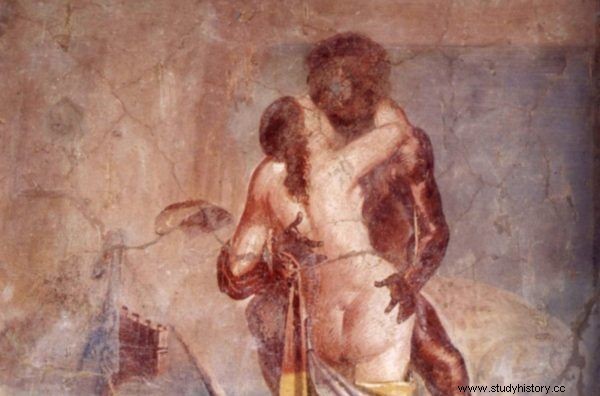A source of suffering and humiliation or a means of improving one's own fate. The element of a happy relationship or the reward for obedience. The sexual life of a Roman slave could take one of a thousand forms. Each one depended on his master.
The emperor philosopher Marcus Aurelius prided himself on "having no relations" with the two slaves, Benedict and Theodotus, but you can be sure that this was not a common attitude among the Roman elite. Being the property of their masters completely devoid of subjectivity, slaves could, of course, be used to satisfy the sexual needs of their masters. This applied not only to women but also to boys. Intercourse with young Roman citizens was forbidden, but the slaves were not protected.
Is it possible to rape a slave?
It was quite natural to take pleasure in his property, and the slave should be glad to do his master's will. There was nothing wrong with the molestation, sexual exploitation and simple rape of one's slaves. When asked "how can you rape a slave at all," the answer was simple:you can't. Even if the victim of the sexual assault belonged to another citizen, the perpetrator could only be charged by the owner with property damage.

Sex with a black slave had a special charm for Roman women…
Some owners refrained more or less from the sexual exploitation or cruel treatment of their slaves. They did so, however, out of the Romans valued restraint and self-control, rather than out of pity and kindness. And the slaves themselves?
Little is known about what they thought of their sexually abusive gentlemen. Some could even enjoy the apparent or real relationship with the owner and significantly improve their fate as a result. This does not, of course, change the fact that they remained victims. As Jerry Toner concludes in the commentary on "Train Your Slaves":
Evidence suggests that a large number of slaves, perhaps the majority, felt offended and even detested their social position and thus experienced a great deal of stress in their lives. partly as a result of sexual harassment.

You can read about the ancient art of love in the newest book by Adam Węgłowski, titled "Ages of Shamelessness. Sex and erotica in antiquity ”(CiekawostkiHistoryczne.pl 2018). Buy with a discount on empik.com.
One of the most famous examples of the tragic relationship between master and slave is the story of Sporus. Nero liked this boy so much that he took a mock wedding with him (same-sex marriages were not recognized by Roman law). Caesar's chosen one has been castrated by him to keep his youthful features. He had to wear women's robes, and his "husband" called him Sabina.
After the ruler's death, the boy became the "wife" of the praetorian Nymphidius Sabinus, and later Caesar Marcus Salvius Otto. The latter's successor, Vitellius, had a different idea. The unfortunate was to appear in the circus as the title character of the performance "The Rape of Persephone" . To avoid humiliation, he committed suicide. He was probably not yet 20 years old, but the ancient authors do not show any signs of sympathy for the victim of Nero they criticize. It was a slave so nobody cared.
Only over time did slaves gain little protection from the law. Caesar Hadrian forbade them to be castrated unless they themselves agreed . On the other hand, women could not be forced into prostitution ... if they were sold on the condition that they would not be used for that purpose. If the new owner ignored this fact, the slave girl would be set free.

Learn the true history of ancient slaves in Mark Sidonius Semp's book "Train your slaves" (Horizon Mark 2015).
Slave "marriages"
Slaves were people like everyone else - even if hardly anyone thought so. They kept their sex drive and also fell in love with each other. Needless to say, the fate of such a couple also depended entirely on the whim of their master. The "marriages" of slaves did not have legal force, but could have many benefits for the owners. Not only did they reduce the likelihood of flight but also profit from the birth of new servants. Such foster children were considered more faithful and trustworthy than slaves for sale.
On the other hand, nothing prevented the owner from considering the relationship inappropriate and selling one of the lovers, separating them forever. The master could also freely choose his slaves in pairs, regardless of whether they had any inclination to do so. What mattered was what was best for the "farm" and the successful development of "breeding". Marcus Sidonius Semp, the ancient alter ego of historian Jerry Toner, explained:
Slave farming is a useful and profitable task […]. They add value to your estates and ensure dedicated and respectful service. They live under the roof of a farm that is consistent and multiplying, like a well-run state should be.
Nothing more nothing less. If only no one tries to introduce these principles in today's world.
* Mark Sidonius Semp is in fact the British historian Dr. Jerry Toner - playing the role of an ancient slave owner and writing a stylized guide based on a wide database of authentic sources from the period.
